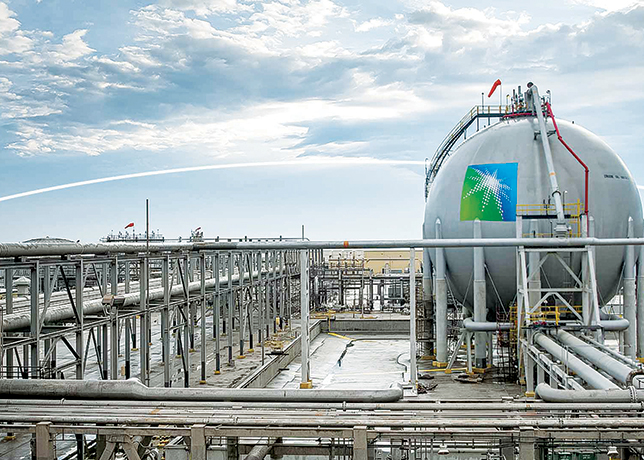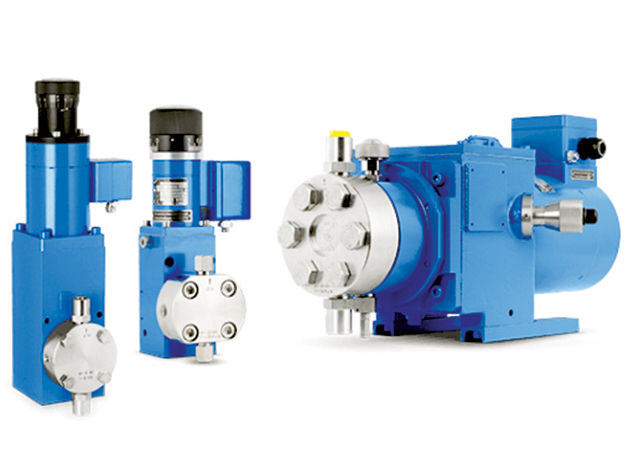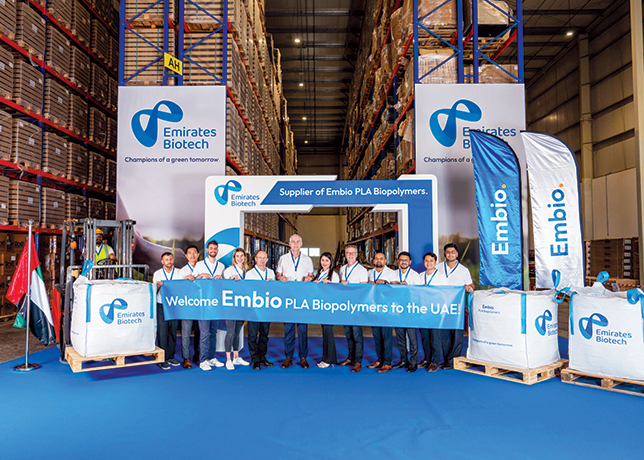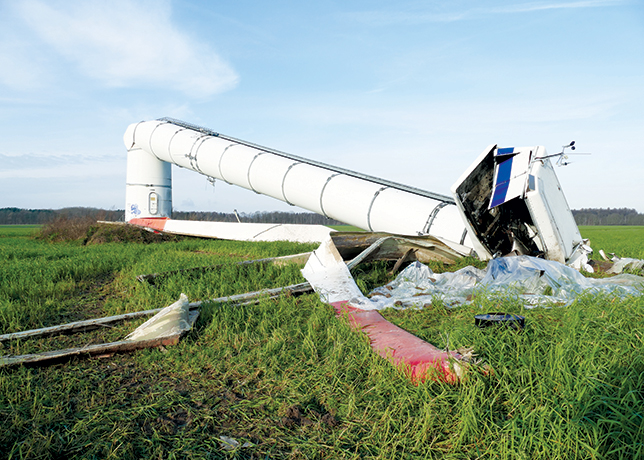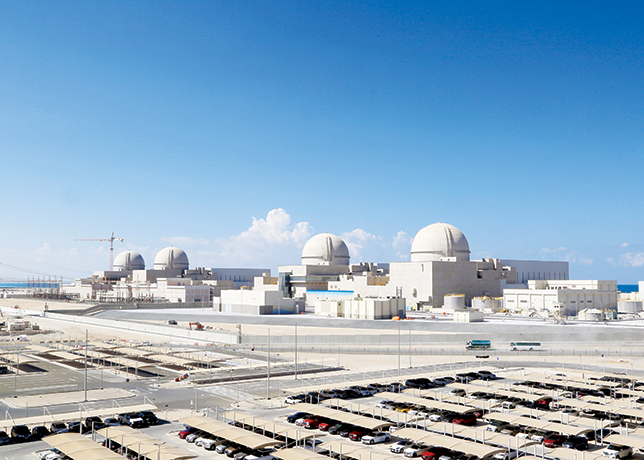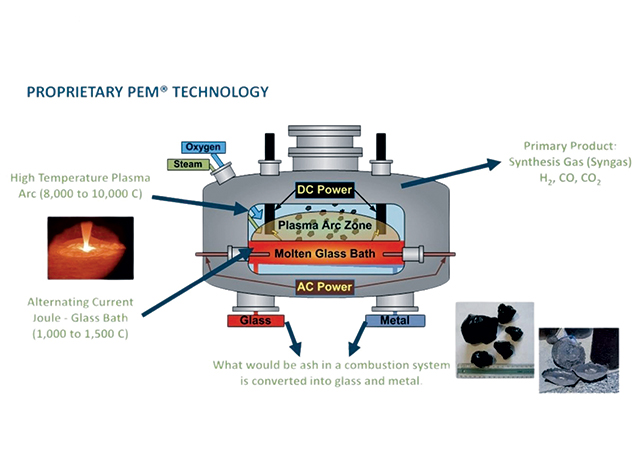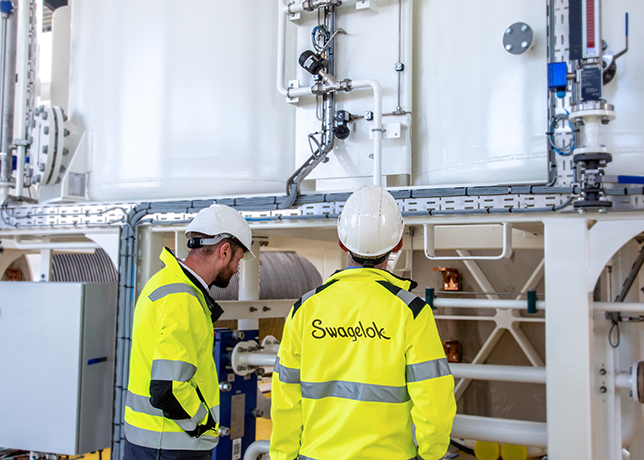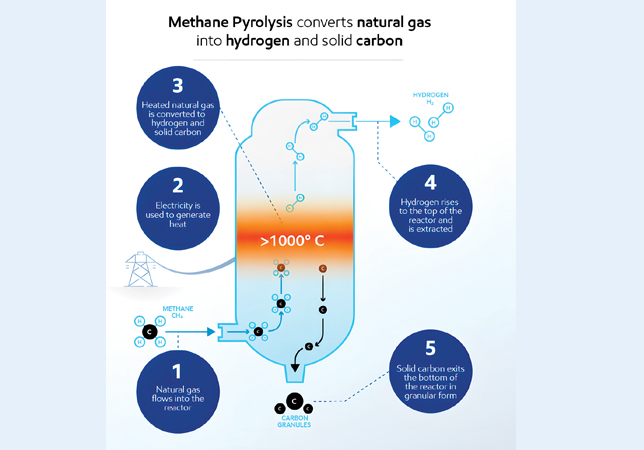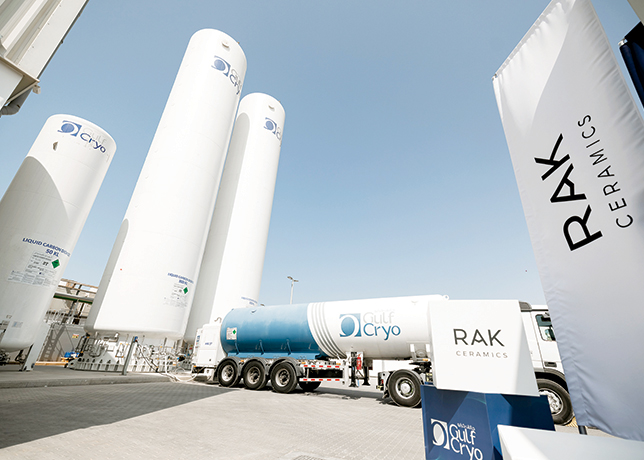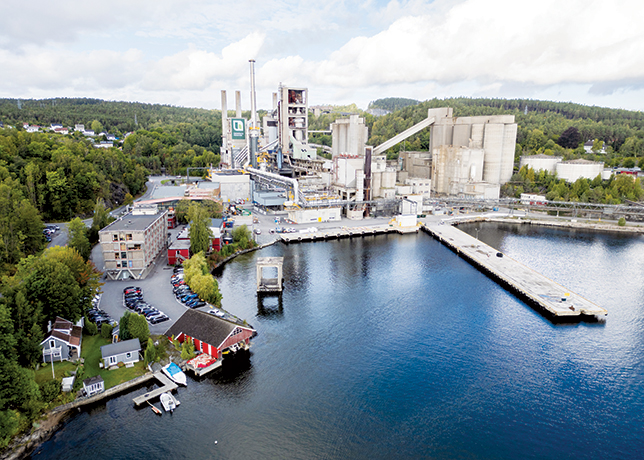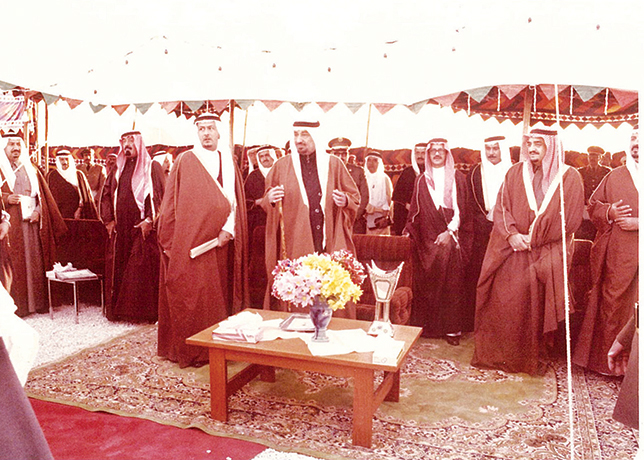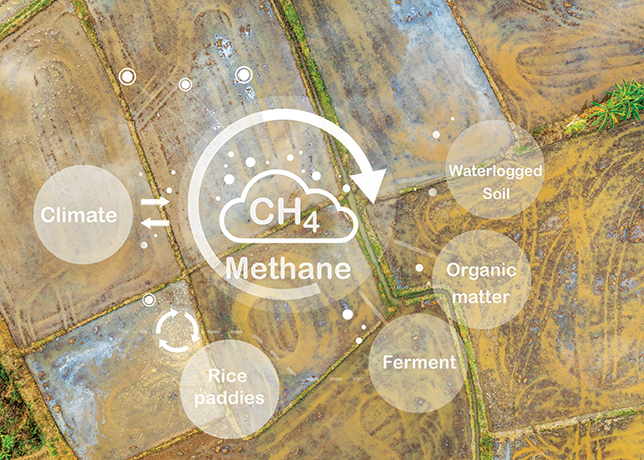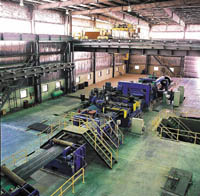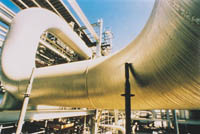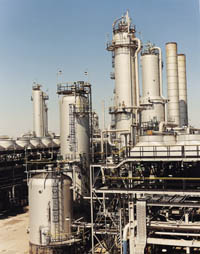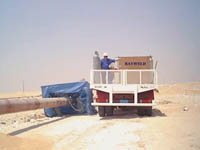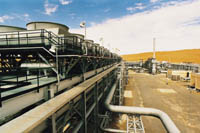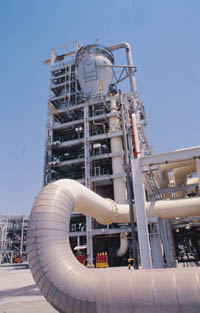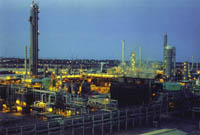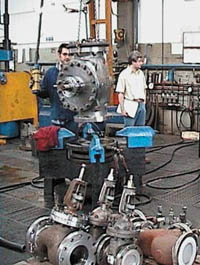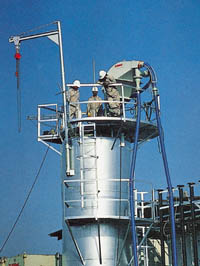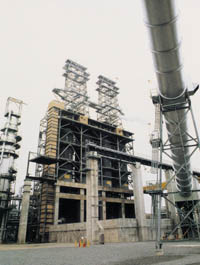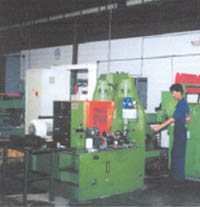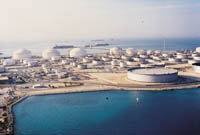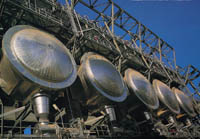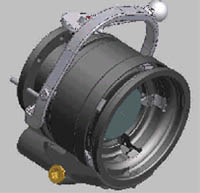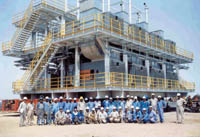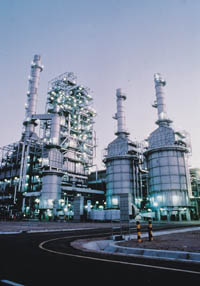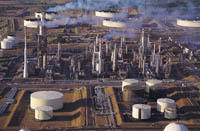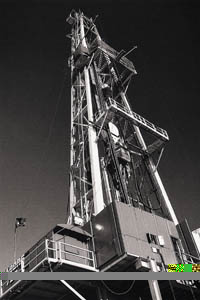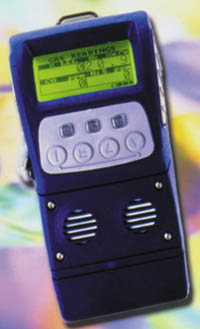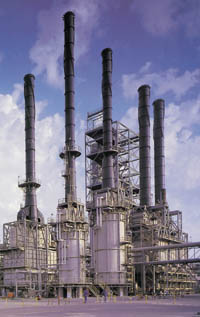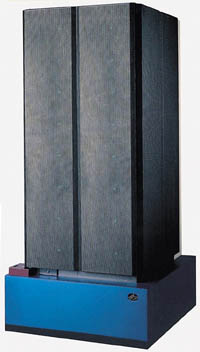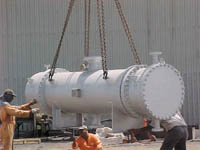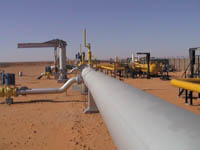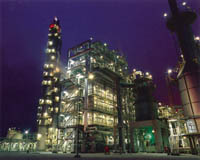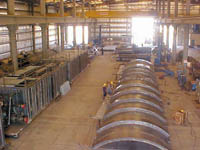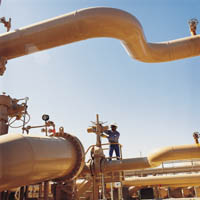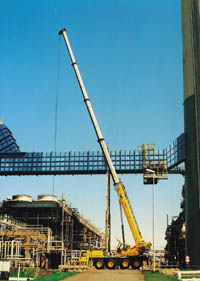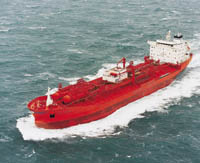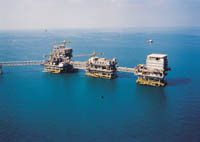
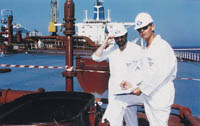 Vela's fleet maintains a stringent inspection programme
Vela's fleet maintains a stringent inspection programme
SAUDI ARAMCO crude transport subsidiary Vela International Marine is preparing for the future with a fleet upgrade which includes four new very large crude carriers (VLCCs).
The 300,000 deadweight tonne vessels are due for delivery next year and 2003, and will complement Vela's current fleet of 21 VLCCs and Ultra Large Crude Carriers (ULCCs), and two petroleum product carriers.
Each new VLCC will have the capacity to transport two million barrels of crude oil.
Vela provides dependable crude delivery to customers in North America, Europe and the Far East.
The economies of scale offered by the company's supertankers enables the company to maintain competitive rates for its crude oil.
However, transporting more than a quarter of Saudi Aramco's annual crude oil exports is a mammoth job and one which requires the most stringent safety standards to be observed.
An accident on a tanker could result in major environmental damage from a subsequent oil spill.
A number of issues are taken into consideration with regards to safety at Vela, through its Marine Operations Department.
Reconditioning of the fleet is a vital aspect of operations, according to the company, allowing a more thorough inspection of the ship's hull, propeller and rudder.
Periodic dry-docking is a requirement of all carriers expecting to maintain international government and industry certification. In the interest of accident-free operations, these requirements impose strict standards or codes with which the owners and operators must comply.
The company supports the shipping industry-wide Condition Assessment Program (CAP) for its tankers, under which a ship's quality is rated by dividing it into its three basic components:
Each of these three main areas receive an overall CAP rating based on the weighted average Technical CAP rating of each individual component part that comprises it.
The three major classification societies, American Bureau of Shipping (ABS), Det Norske Veritas (DNV) and Lloyds Register (LR) established the rating system to describe these margins.
The CAP survey typically takes two classification society-approved and trained senior surveyors two weeks and requires the attendance of an independent nondestructive-testing (NDT) - ultrasonic - technician from a third-party company to make and record the readings, according to a company official.
The method of assessing each of the structural or working components of the Hull, Machinery and Cargo Systems is:
Hull
A set of ultrasonic thickness readings is taken of specific areas of the ship's structure. These readings are used to determine the ''as is'' steel thickness of each plate or structural component.
At least one reading per plate is taken at the point determined by the surveyors to have the most representative corrosion. These readings are later used to determine the average corrosion throughout the vessel and are used to assess the global, or overall, strength of the ship's hull.
A separate diagram is made of any local corrosion or pitting found during the survey and a narrative written about the method and quality of the repair. Both local and global hull integrity are considered when one is making the above rating. Items covered in the NDT and close-up surveys are, as a minimum: all oil tanks that are used for ballast and dedicated ballast tanks are inspected by a Classification-qualified senior inspector; between 30 per cent and 50 per cent of the dedicated cargo-only tanks are completely inspected; remaining tanks are inspected generally; thickness measurements are made of the structure and plate in the areas listed below using ultrasonic NDT:
Each individual rank of the ship's internal structure is assigned a CAP grade based on the results of the NDT readings and the close-up inspection for pitting. A diagram of the thickness reading is prepared that shows the amount of deterioration found at each reading compared to its ''as built'' criteria. These diminutions are then graphed and a CAP grade assigned to each space and again for the whole ship.
Additionally, a strength calculation is done to determine by what margin a ship's hull exceeds the minimum requirements for global strength. This margin must be above the required safety tolerances by percentages deemed acceptable to the senior surveyor for the Classification Society for the assigned CAP rating.
Machinery
In the preparations for survey, the ship's main and auxiliary engines are listed with all control and monitoring equipment for development of function tests based on manufacturer's specifications.
Function tests are carried out on all main propulsion and auxiliary systems. Ship-specific equipment is added to the list if it is used to handle cargo.
Each system is test run under 80 per cent load conditions for a period of at least six to 12 hours, depending on the Classification Society rules for the test environment, with vibration monitoring readings and lube oil analysis performed on the machinery to discover any latent defects. Additionally, maintenance records are inspected to ensure that manufacturers' recommendations are being met.
A narrative report is prepared comparing how each item covered in the survey performed in regard to the vibration analysis and against the manufacturers' specification. An individual CAP rating is then assigned to each item, the weighted average of which forms the basis for the CAP rating for the ship's Overall Machinery.
The criticality of subfunctions and lowest-level functions is assessed by evaluating the consequences if the function fails and the estimated time to a functional failure.
The consequences are considered in relation to the function's criticality with respect to safety for personnel and others; safety for the environment; commercial availability; safety of ship and equipment and safety of cargo.
Cargo systems
The preparations for survey include listing the ship's cargo equipment for development of function tests based on manufacturer's specifications.
The same function tests are performed on the ship's Cargo Systems as on the ship's machinery, and the CAP rating is developed in a similar manner.
The Cargo Systems cover the following items as a minimum: main cargo pumps and control systems; stripping pumps and control systems; cargo pipelines, on deck, in tanks and in pumproom; tank access hatches, seals and fittings; ballast: pumps and control systems; ballast pipelines in tanks and in pumproom; venting system, and monitoring controls; Inert Gas System (IGS), including scrubber, fans, monitoring and control equipment; cargo measurement controls; cargo heating systems and hydraulic systems used for valve controls.
In addition to the rigorous series of inspections and checks, all of Vela's new ships carry builders' warranties with certain adjustments made during the specified warranty period. At sea, each ship's crew performs regular inspection and maintenance routines, according to a Vela official.
Vela says that it believes strongly in CAPs and can point to four major positive results that have been noted about ships with a CAP:





















